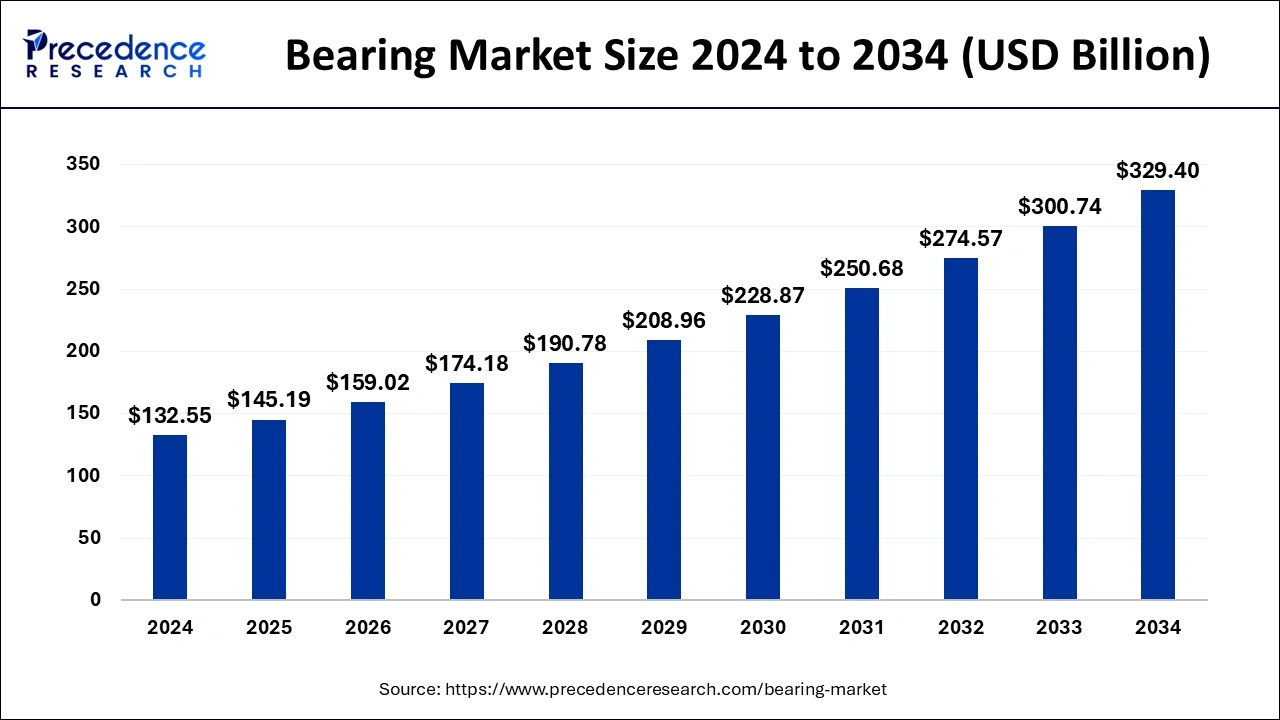Bearing Market to Reach USD 329.40 Billion by 2034.
Bearing Market Key Insights
- Asia Pacific led the global market in 2024, holding a 41% share.
- The roller bearings segment recorded the highest market share by product in 2024.
- The automotive segment dominated the market by application in 2024.
- The railway and aerospace segment is expected to witness significant growth during the forecast period.
The global bearing market is experiencing significant growth, driven by advancements in various industries and technological innovations. Bearings, essential components that reduce friction between moving parts, are integral to the smooth operation of machinery across sectors such as automotive, aerospace, industrial machinery, and renewable energy. In 2023, the global bearing market was valued at approximately USD 138.28 billion and is projected to reach USD 248.11 billion by 2030, growing at a compound annual growth rate (CAGR) of 8.71%. This robust expansion is attributed to the increasing demand for high-performance machinery and the rapid industrialization in emerging economies. The market encompasses various bearing types, including ball bearings, roller bearings, and plain bearings, each serving specific applications and industries.
Sample Link: https://www.precedenceresearch.com/sample/1020
Market Drivers
Several factors are propelling the growth of the bearing market. The surge in automotive production, especially with the rise of electric vehicles (EVs), necessitates advanced bearings that can withstand higher speeds and different load distributions. Additionally, the industrial sector’s push towards automation and the adoption of advanced machinery require bearings that offer high precision and durability. Technological advancements have led to the development of specialized bearings, such as self-lubricating and wear-resistant variants, enhancing performance and reducing maintenance needs.
Opportunities
The renewable energy sector presents a significant opportunity for the bearing market. Wind turbines, for instance, rely heavily on high-quality bearings to ensure efficient and reliable operation. As global efforts to combat climate change intensify, investments in wind energy projects are expected to rise, subsequently increasing the demand for specialized bearings. Moreover, the trend towards smart bearings equipped with sensors for real-time monitoring offers opportunities for manufacturers to provide value-added products that facilitate predictive maintenance and reduce operational downtimes.
Challenges
Despite the positive outlook, the bearing industry faces challenges. Fluctuations in raw material prices can impact production costs, posing a challenge for manufacturers in maintaining competitive pricing. The rise of counterfeit products in the market not only affects the revenue of legitimate manufacturers but also raises concerns regarding quality and safety. Additionally, the transition towards electric vehicles, which have different bearing requirements compared to traditional internal combustion engine vehicles, necessitates continuous innovation and adaptation by bearing manufacturers.
Regional Insights
The Asia Pacific region dominates the bearing market, accounting for approximately 39.3% of the global share in 2023, with revenues reaching USD 49.04 billion. This dominance is driven by rapid industrialization, urbanization, and significant investments in automotive and manufacturing sectors in countries like China and India. Europe follows, with a strong emphasis on automotive innovations and a growing renewable energy sector, further boosting the demand for specialized bearings. North America also presents a steady growth trajectory, supported by advancements in industrial automation and aerospace technologies.
Read Also: Electrolyzer Market

